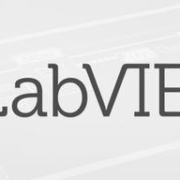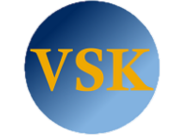The new features in LabVIEW 2023
Give your productivity an upgrade with LabVIEW 2023 Q1, packed with exciting new features and capabilities like these:
LabVIEW Introduces a Tool to Identify and Install NI Drivers for a Project
LabVIEW 2023 Q1 includes a utility to assist you in identifying and installing NI drivers used by a LabVIEW project.
Select Project>Package Dependencies from the Project Explorer menu or click the Package Dependencies button in the Project Explorer toolbar to open the Manage NI Package Dependencies dialog. The dialog examines the project to discover which NI packages are used. You can click the Save List button to save a text file that lists the identified packages.
If one or more packages are not currently installed, the Install button will be enabled. You can click the Install button to launch NI Package Manager, and install the required packages.
Enable the Show VIs checkbox to understand the reason a package is listed as a dependency. This shows the VIs referenced by the project that the tool assumes are provided by the package.
Each time the dialog box opens, the tool attempts to update a component from ni.com to get the most-up-to-date directory information.
If the project uses an FPGA target, the dialog will identify LabVIEW FPGA Module as a dependency. However, the tool is currently unable to recommend a specific driver for the target. If the FPGA Module is installed, FPGA targets in the project will show their model numbers, and you can search for applicable drivers on ni.com.
Applications on Linux Support Custom Name and Icon
Starting in LabVIEW 2023 Q1, you can customize the application name and icon for built applications on Linux. Also, if you do not provide a custom icon, built applications will now use the system default application icon instead of the LabVIEW icon.
To customize the application name and icon, use the Properties dialog for the application’s build specification. LabVIEW will generate a .desktop file along with the executable. You will need to move the .desktop file to the appropriate location such as /usr/share/applications/ for your Linux distribution.
Terminals Height No Longer Changes With Font
- Unbundle/Bundle by Name
- Locals/Globals
- Invoke Node
- Property Node
- Non-icon View for SubVI Calls
- Express VIs
- Event Structure Event Data Node
- Register Event Callback
- Register for Events
- Call Library Function Node Name View
- In Place Element Structure Unbundle/Bundle Elements
- Get Waveform Components
This is a LabVIEW 2023 Q1 feature that has been inspired by the LabVIEW Idea Exchange. If the new terminal size introduces wire bends to your VI diagrams, you can use the VI Analyzer Wire Bends test to find them. You will need to remove the wire bends manually.
Python Support
LabVIEW 2023 Q1 adds support for Python 3.10. In addition, LabVIEW 2023 Q1 supports Anaconda and venv virtual environments with the new Open Virtual Environment Session function.
Support for macOS 13
LabVIEW 2023 Q1 now supports macOS 13.
For further details please speak to our technical expert at VSK Test Solutions:
Email: sales@vskconsultants.com | Tel: +44(0)1296695548



